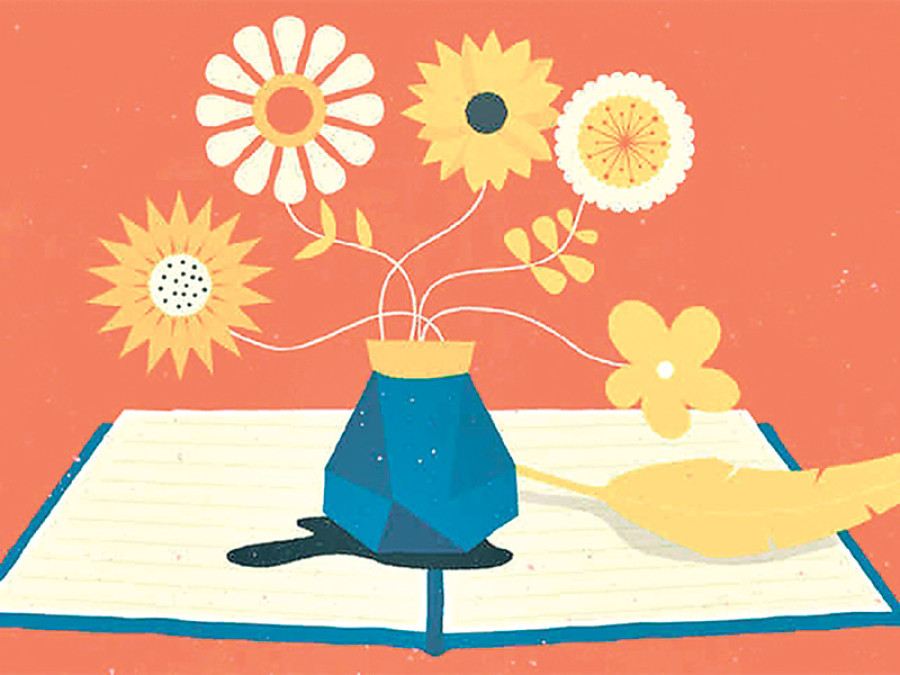Opinion
Poetic imagining
Folklore will unite and help show a creatively shared South Asia by reliving the radicalism of imaginings, love and creativity
Last Sunday, I participated in a unique panel ‘conversation’ and poetry festival at the invitation of Dr Kavita Sharma, President of South Asian University (SAU) in Delhi. SAU is an international university established by the eight member nations of Saarc in order to bring ‘academicians and students from the SAARC member states for pursuing knowledge, and promoting collaborative research.’
As mentioned in her invitation, my responsibility would be to be on the panel and participate in a conversation with Ashok Vajpayi, poet and former Chairman of Lalit Kala Akademi, India on the “poetic imagining(s)” of South Asia, in the first part of the ‘first international poetry festival—Nepal in South Asia’. Another responsibility would be, as stated in the follow-up letters, to participate in the poetry festival, and speak on the Maithili paintings of a Nepali painter from Janakpur, Shankuntala Jha, and her friends, exhibited on the university premises. It was interesting that this festival was a collaborative effort of Nepal Vidyarthee Samaj and Institute of South Asian Studies. Nepali ambassador to India Deep Kumar Upadhyay had extended his support through the BP Koirala Foundation.
What struck me in the invitation was this phrase: “If we can inspire a younger generation of creative and hardworking people to think about the poetic imagining(s) of the South Asia region along with its strategic and economic aspects”, that would be fulfilling the institution’s mandate.
Erosion of creative faculty
The idea was to explore creative aspects in academic works that were not directly related to poetry. This part appealed to me as a teacher of literature and art-related theories.
Erosion of the creative faculty of thinking in social studies work is a very tantalising subject in the academia in Asia and the West. Efforts to stem the erosion are underway in Japan. I saw some of these efforts during my academic research towards the end of the 20th century at Tokyo University of Foreign Studies on the life and travels of the Japanese Monk Ekai Kawaguchi to Nepal and Tibet in the very early years of the 20th century. I also published a book on him. Efforts made elsewhere in Asia to bring social science studies closer to creative exercises are reported here and there.
I discussed the subject a year or so ago with Mallika Shakya, an associate professor at the South Asian University. She is well known among the academics and social science researchers of Nepal and abroad. Mallika had first brought this idea of working on the social imaginings of South Asia, and had proposed a panel conversation and a poetry reading. Her idea was to bring a Nepali literary writer and academic in close and intense conversation initially with an Indian creative writer and academician.
Thus, my panel discussion and its modus operandi originated from the idea of this brilliant academic who has made a good name for herself in SAU. I don’t know how much cooperation she would have received in other universities. But Mallika apparently extended this idea to include more students in this exercise in the dialectics between poetry and social and even biological sciences. I was very impressed to find that the students who made this festival successful are studying economics, sociology and biological engineering.
Gist of the conversation
I would like to present the gist of my panel conversation with Ashok Vajpayi. I talked about how poetic imagining links South Asia and how a space or geography is related to poetic imaginings. The initial questions are about the relations between poetic imagination and space, a geo-cultural space for that matter. The questions are: Does this topic evoke imaginings or the track related to space and abode? Would it be a valid proposition, to link poetry with a certain form? These questions are important because they open the vital modes of interpretations, and perhaps the productive grounds, to open the conversation.
But now the poetic imaginings in South Asia should be seen in not just the generic form of poetry, its materiality or religiosity, but also in other forms that embody the poetic elements as found in theatre, paintings, songs and fiction. A unique tradition of blending and the appeal of dialogic form are seen in art genres in South Asia today. That shapes the imagination in difficult times.
Recognising poetic imaginings is a complex and challenging question now. We should ask a series of questions: Do we explore this as an academic subject which is happening in all spheres of life and literary forms, including rituals and folk traditions? Or are we trying to revive poetic imaginings to reenergise it as a strategy to fight harsh conditions, or as a means of strength to cope with the times that are losing poetic meanings? The answer to the first question is easy. Academicians can take care of that. But the second—how to turn the poetic imagining into strength—is the most important and challenging part.
The last point is the sharing, which would involve publication and meetings. Importantly, the poetic imaginings will be revitalised by revisiting folklore, by freeing it from limited genres. Folklore will unite, and help show a creatively shared South Asia, not by shying away from accepting the established forms of literate tradition, but by reliving the radicalism of imaginings, love and creativity.
Ashok Vajpayi stressed shared creativity and the turning of spaces into lyrics. A very good poet, activist and champion of writers’ freedom whom I have known for over two decades, Ashok has long worked for making poetic imaginings as strength and power to cope with the adverse forces that work to limit the freedom. To him, therefore, freedom and poetic imaginings have a symbiotic relationship.
Three days in that complex architectonic centre in the sweltering heat of Delhi resonant with the poetry of young people and conversations were memorable.




 13.12°C Kathmandu
13.12°C Kathmandu









